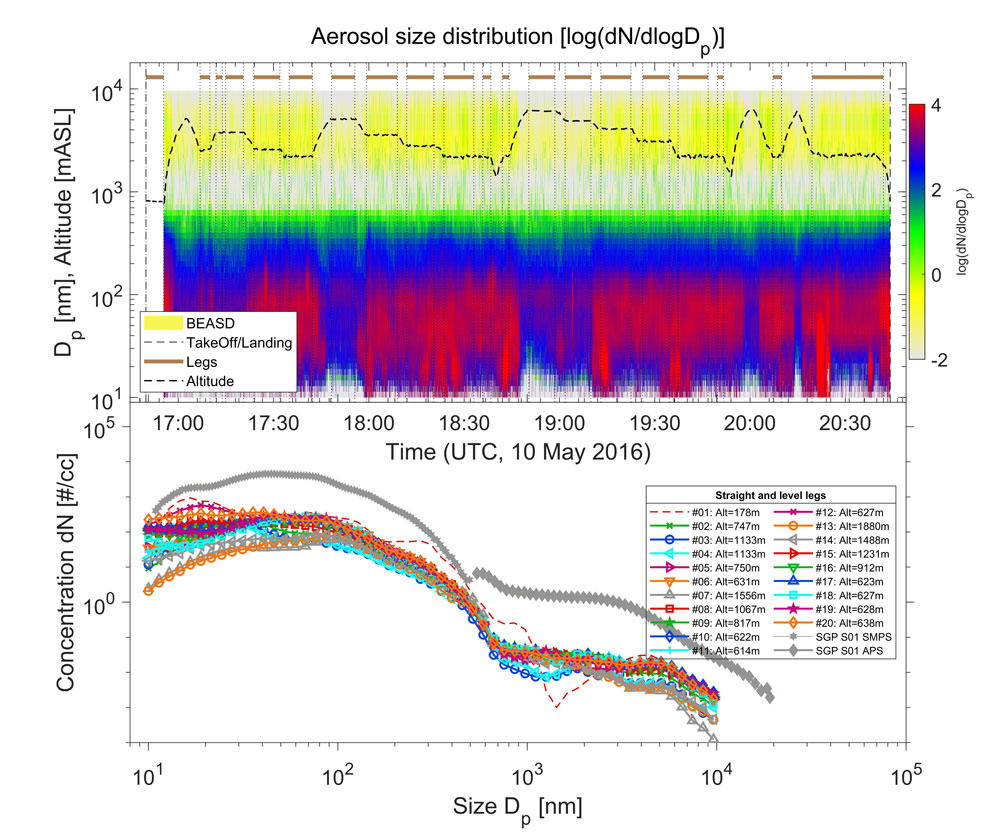New Aerosol Data Product Released From HI-SCALE Campaign
Published: 22 February 2022

A new data product providing best-estimate aerosol size distribution by aircraft measurements is available from the 2016 Holistic Interactions of Shallow Clouds, Aerosols, and Land-Ecosystems (HI-SCALE) field campaign.
During HI-SCALE, the Atmospheric Radiation Measurement (ARM) Aerial Facility conducted flights of the Gulfstream-159 (G-1) research aircraft over the Southern Great Plains atmospheric observatory.
Scientists can use the new HI-SCALE data product to drive or constrain models and validate model simulations. This product can be used whenever size-resolved aerosol concentration is needed.
The product covers a wide range of particle sizes from ultrafine to coarse-mode aerosols (10 nm to 10 µm). Please note that this is a field campaign data set, which is limited in time and space.
This is a merged product based on the data from two aerosol spectrometers (fast integrated mobility spectrometer and passive cavity aerosol spectrometer) and two cloud probes (cloud and aerosol spectrometer and fast cloud droplet probe).
The original data were acquired on the HI-SCALE G-1 flights during two intensive operational periods: April 23 to May 22 and August 27 to September 25, 2016.
The data are presented in the ASCII comma-separated value format and accompanied by a README file with details of data origin and processing.
Scientists can use this one merged data set of size-resolved aerosol concentration instead of four separate datastreams.
For questions or to report data problems, please contact Mikhail Pekour.
Access the data set in the ARM Data Center. (Go here to create an account to download the data.)
To cite the data, please use doi:10.5439/1838448.
Keep up with the Atmospheric Observer
Updates on ARM news, events, and opportunities delivered to your inbox
ARM User Profile
ARM welcomes users from all institutions and nations. A free ARM user account is needed to access ARM data.


















